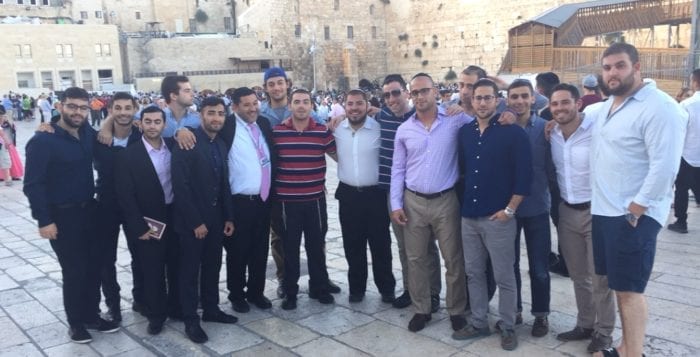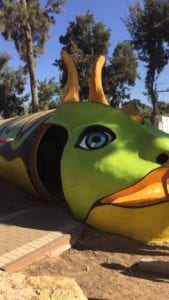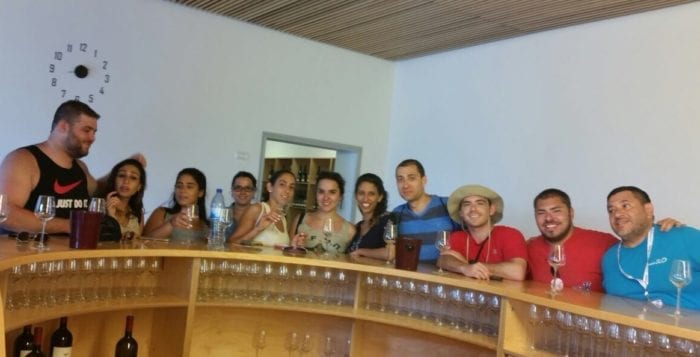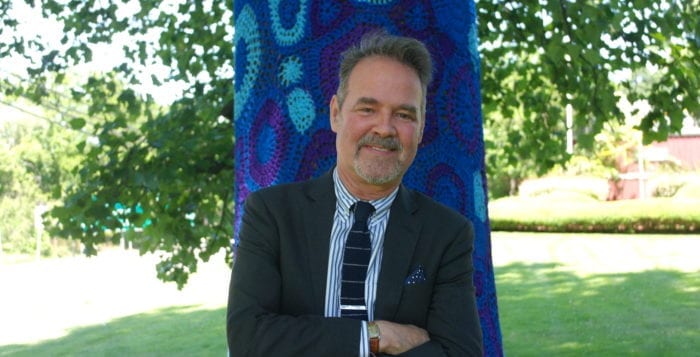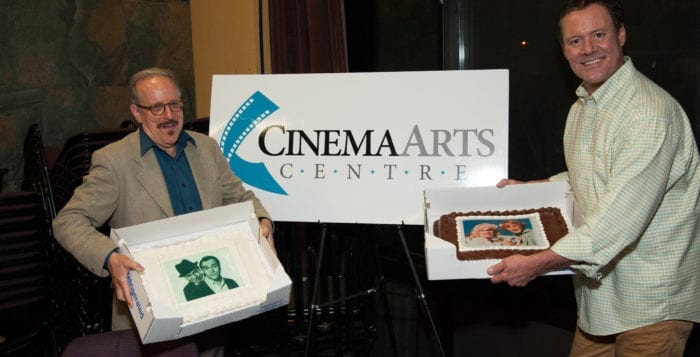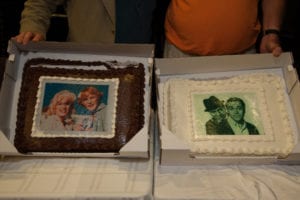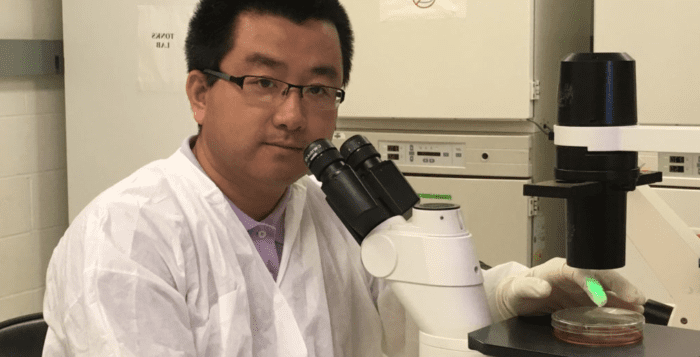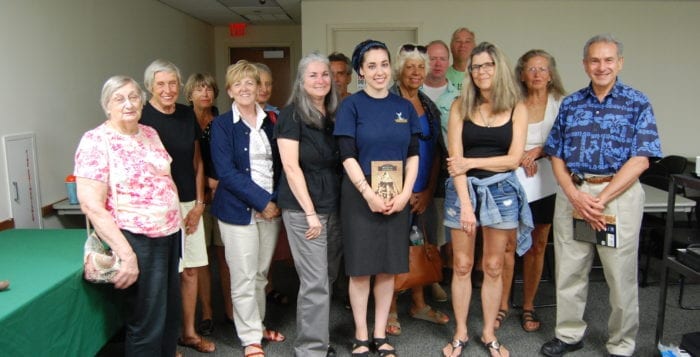By Melissa Arnold
Every year at Christmastime, my friends and I get together for some holiday cheer and a game of White Elephant. If you’re not familiar with the concept, here’s how it works: Everyone brings a prewrapped gift to the party and draws a number from a hat that determines the order of play. When it’s your turn, you can choose to open one of the gifts in the pile or steal someone else’s opened gift.
Last year’s party had some hot commodities — the new Adele album, a chocolate gift basket, a Visa gift card — but none got the group more riled up than a coloring book and colored pencils. I’m not talking about a kiddy book, either. These drawings were incredibly intricate, featuring flowers, mandalas and other complex designs meant for adults.
The coloring trend has swept the nation over the past several years with no end in sight. Everyone from college students to seniors is clamoring to get their hands on something to color.
As for me, I had only one question: What’s the big deal?
Coloring books for adults have been around for decades in smaller quantities. The first of its kind likely emerged in the 1960s, when the “JFK Coloring Book” reached the top of the New York Times’ best-seller list. The modern craze is often attributed to British illustrator Johanna Basford, whose coloring book “Secret Garden” has sold millions of copies since its debut in 2013 and was translated into more than a dozen languages.
 Getting together
Getting together
Now, coloring books are flying off the shelves at craft stores, supermarkets and book shops. Several hotel chains offer coloring books to their guests to help them de-stress. For some people, there’s even a social component — coloring groups have cropped up all over the country as well as online.
Annina Wildermuth, a freelance illustrator, is the informal “coach” for one such group at the Huntington Public Library.
Library staff members approached Wildermuth, a frequent patron, about a year ago asking if she knew about the craze. They wondered about setting up regular opportunities for adults to color in a group setting. Wildermuth told them it was a fantastic idea.
“I had a Twitter list of people who enjoyed coloring, and there’s a publisher here on Long Island that has done very well producing adult coloring books, so I had no doubt it would be successful and people would come out.” And she was right. More than 30 people came to the first session, and while the group has slimmed down since then, she sees at least 10 adults at each bimonthly gathering.
“It’s really a very diverse group of people who come out for all kinds of reasons. We have younger and older people, and both men and women,” Wildermuth says. She always puts on relaxing instrumental music to color by. At some meetings, she’ll do a demonstration of different coloring techniques or supplies, while other meetings are self-directed.
Most attendees will bring their own projects and supplies to the meetings, but Wildermuth always provides plenty of options for newcomers or those who want to switch things up. She also noted that people love to bring friends and sit and chat while they color, to catch up on life.
Healing in color
The accessibility of art makes it beneficial for more than just stimulating creativity. That relaxed, peaceful feeling when you settle down to color is exactly what art therapists work to develop in their clients.
Ed Regensburg has always had a passion for the arts, creating his own artwork, working in schools and conducting market research in the field. More than 40 years ago, he began to explore the intersection of art, psychology and spirituality. Those questions led him to a lengthy career in art therapy, with a private practice in East Northport and several published books.
Art therapy involves more than just drawing pictures, Regensburg said. The certification process is rigorous, including a master’s degree, a board exam and licensing test with the state.
Therapy sessions usually involve a combination of traditional talk therapy and time in the studio creating and discussing art. The therapist will hold on to the client’s work to use in a future session if there’s a need. Regensburg’s clients can try drawing, painting and sculpture.
“Part of the human experience is being driven by unconscious feelings, emotions and perceptions. Art gives a person the ability to explore and release their emotions in a way that’s comfortable.”
Put simply, art can help all kinds of people share what they’re feeling when talking about it is difficult or even impossible. In Regensburg’s practice, art therapy is particularly effective with young children and nonverbal individuals, such as those with autism spectrum disorders.
“How do you talk to a four-year-old about losing her father? We talk using the language of imagery,” he explained. “Grief is a very complicated process that all human beings have major defenses against. Grieving healthily involves navigating through that. That’s why art therapy is so powerful … you can experience the relief and release you need while creating a drawing that reminds you of your loved one that we can talk about and use to help identify what you’re experiencing.”
Regensburg also stressed that effective art therapy should be tailored to each person’s needs and experience. Every client has a consultation before starting therapy to determine if they’re a good fit and what mediums will encourage recovery.
 Piece by piece
Piece by piece
Deborah S. Derman admits she’s not exactly an artist. But she knows that art can work wonders for people in pain. Her own story is about as traumatic as it gets: Derman, who grew up in Rochester and now lives in Philadelphia, suffered her first loss at 27 when a dear friend committed suicide. It only got worse from there, Derman recalled.
“It was incredibly traumatic for me. When I moved to Philadelphia, my parents were flying down to take care of me and my newborn son, and their plane crashed in front of me. I also lost my husband of a sudden heart attack while I was pregnant with my third child. And when all of that passed, I was diagnosed with breast cancer.”
But despite it all, Derman was determined to work through the grief in a healthy way. That motivation led her to study bereavement academically and then open her own grief counseling practice. “One person’s experience isn’t everyone’s experience. Looking at things clinically enabled me to bring both academic research and my own personal experience to my work, which is invaluable,” she said.
Today, she is 11 years cancer-free, her children are grown, and her career has brought hope and healing to people from all backgrounds. With help from friends in the New York area, she even launched a support group for families of 9/11 victims from Staten Island in the months following the attacks. Many of those people are now among her closest friends, she said.
Her foray into art therapy was a very recent, happy accident. Like so many of us, Derman received an adult coloring book as a Christmas gift this past year. She didn’t understand the hype but found a comfy chair and decided to give it a chance. “I opened up the book and I admit that I was overwhelmed by how complex the pictures were. But I started working on it, coloring just one space at a time,” she said.
Then, suddenly, Derman had what she called a lightbulb moment: “I thought to myself, ‘This is how I got through (my grief)! — one thing at a time, not focusing on the whole page, the whole book, or my whole life.”
The epiphany sent Derman on a creative ride that hasn’t stopped. That same day, she wrote down 35 words that made her think of recovery. Then, she approached an illustrator friend, Lisa Powell Braun, and asked for her help designing coloring pages.
The finished product, “Colors of Loss and Healing: An Adult Coloring Book for Getting Through the Tough Times,” was published April 1 and features deeply personal drawings that bring Derman peace. In addition, each drawing has a corresponding journal page for writing about any feelings that arise. Plans for a second edition with more images and personal reflections are already in motion.
“When you go through a significant loss, one of the first things you experience is a loss of concentration, because all you can focus on is your anguish. Coloring gives people something relaxing to do that will also help restore focus. It’s deceptively simple,” she said. The book’s Facebook page has received messages from around the world from those who are benefiting from the images. 
A lasting trend
Wildermuth, Regensburg and Derman all agree that the success of adult coloring is bound to continue.
“We all know the adult coloring trend is here to stay,” Derman said. “When someone is stressed and they pick up a pencil and start to color, they start to relax. And it can be a private activity or a social experience. You can’t go wrong. The images are right there for you on any topic you can imagine. All you have to do is start. So what if you color outside the lines?”
Regensburg has a deeper theory for why adults are gravitating to coloring books: “People are responding to an over-digitized society. So much of what we do is digital and screen-based. They’re seeking a way to express themselves in a way that’s concrete and more real.”
And Wildermuth views the trend from an artist’s perspective, explaining that it gives everyone a chance to explore art in a “safe” way. “There’s something intimidating about a blank page, to come up with an idea from nothing,” she said. “But a coloring book gives you options. You can dive right in and not worry about whether or not you can draw. It’s accessible for all kinds of people.”
To learn more about Ed Regensburg and art therapy, visit his website at www.creativesanctuary.com or call 631-493-0933.
Deborah S. Derman’s book, “Colors of Loss and Healing: An Adult Coloring Book for Getting Through the Tough Times,” is available online at www.amazon.com. Learn more about her book by visiting www.deborahdermanphd.com, or search Colors of Loss and Healing on Facebook.
Get coloring!
Ready to try coloring for yourself? Grab a book at your local craft store and head to one of these upcoming events:
Setauket: Aug. 18 from 6:30 to 8:30 p.m. at the Emma Clark Library, 120 Main St. Led by artist Pam Varacek, adults will receive 10 coloring pages and all supplies are provided. Preference is given to library cardholders, but all are welcome as space allows. Call 631-941-4080.
Huntington: Join artist Annina Wildermuth twice monthly at the Huntington Public Library, 338 Main St., for the Coloring for Grownups Club. Bring your own pages and supplies if you can. Snacks are encouraged. Preference is given to library cardholders, but all are welcome as space allows. The club will resume meeting from 1 to 3 p.m. beginning Sept. 15. Session dates will vary, so call for information: 631-427-5165.
Greenlawn: An adult coloring workshop meets Tuesdays from 1 to 4 p.m. at the Harborfields Public Library, 31 Broadway. All are welcome. Info: 631-757-4200.
Port Jefferson Station: While not an official class, the Comsewogue Public Library, 170 Terryville Road, has a large coloring sheet and pencils set up for anyone to color. The shared project remains at the library, but feel free to stop by and work on a section. Questions, call 631-928-1212.



 Getting together
Getting together  Piece by piece
Piece by piece 